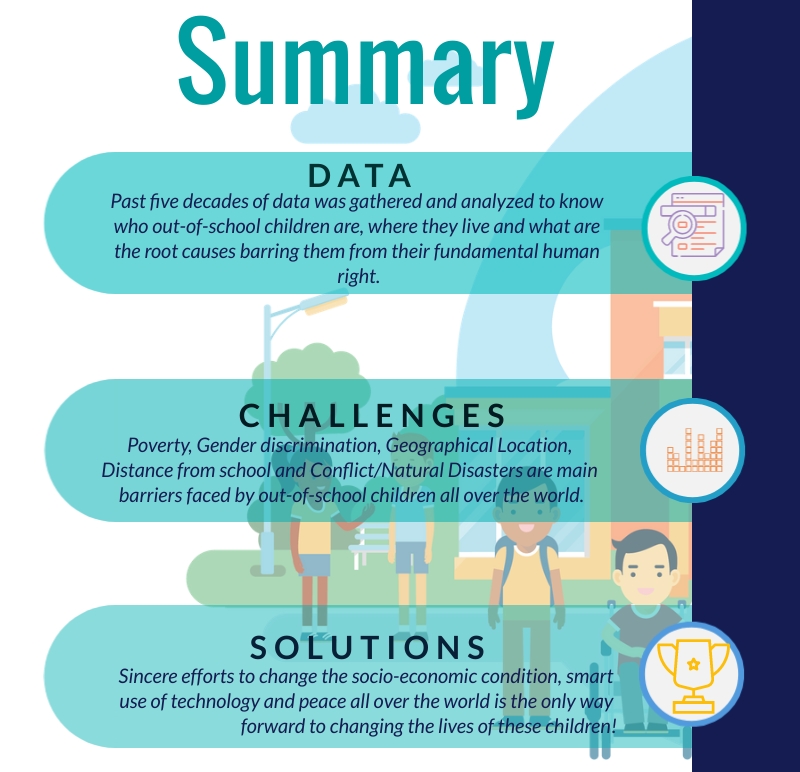Key Findings
From analysis and visualizations carried above, it is clear that despite an overall decreasing rate for out-of-school children, there are widespread challenges that continue to leave large number of children excluded. The main barriers that continue to hinder children from going to school are:
- Poverty: Financial position of a child's family is the biggest hurdle forcing him/her to drop out and become child labor.
- Gender Discrimination: Mostly because of cultural or traditional reasons such as bias against educating females, girls are kept out of school hence accounting for low attendance.
- Location: Most of out-of-school children belong to rural areas of countries where there are no schools or they are located at far away distances. Even if there are any schools in the vicinity, the quality of education and teachers is not very high.
- Resources: In some underdeveloped countries, there simply are not enough schools, teachers and classrooms that can accomodate all children enabling them to go to school.
- Conflict: According to UNICEF report published in 2018, one third of global out-of-school children's population belongs to countries affected by war, conflicts or some natural disaster.
Conclusion
After assessing the barriers that prevent children from basic education, following are the key measures that need to be taken on priority level so that no child is left behind:
- Schools fees must be abolished (or atleast made affordable) and all necessary support and equipment should be provided to financially challenged children so that they may continue to pursue their education.
- Lowering the burden of household responsibilities and discouraging early marriages in the society will help improve the female enrollment in educational institutes.
- By making use of technology, children belonging to distant or remote areas can be engaged in active and interactive educational activities and made part of mainstream educational system.
- Local governments as well as international bodies and practitioners must direct their investments on making strategies that leave a lasting impact on the educational needs of out-of-school children.
- Natural disasters cannot be avoided but man-made ones surely can be resolved in a peaceful manner without the use of violence and arms. Without support, conflict-affected children lose out on the chance to reach their full potential and rebuild their communities. United Nations and other humanitarian agencies must implement effective measures to protect and educate children living in war zones.
- Most important of all, a strong committment and desire is required from grass-root to highest possible levels to implement all recommendations mentioned above.
